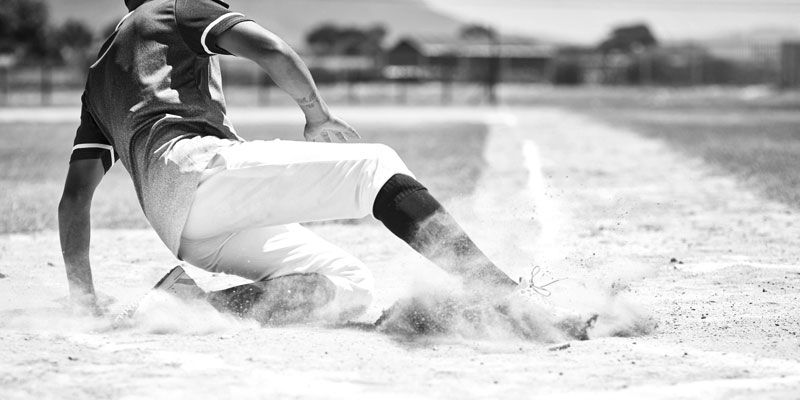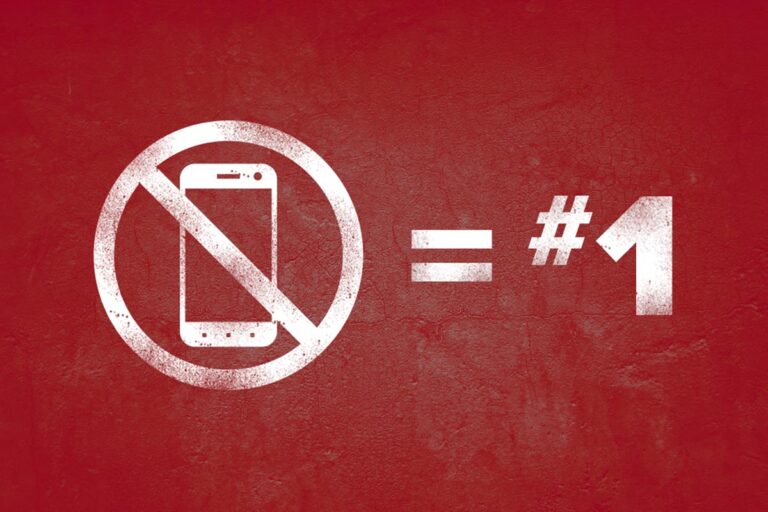In honor of Black History Month, Six Star Pro Nutrition wants to make sure that you know the names that helped change sports for the better. From the first African-American man to play in the Major Leagues to the first Black tennis player to ever win a Grand Slam at the French Open, we’re celebrating black athletes who had to endure and overcome throughout their lives. By doing so, these legendary and heroic athletes raised the bar for future generations. Let’s take a look at some of the names that you need to know.
JACKIE ROBINSON
Jackie Robinson broke the baseball color line when he started at first base for the Brooklyn Dodgers on April 15, 1947. Prior to that, the Major Leagues had not had an African-American player since 1889, when baseball became segregated. When the Brooklyn Dodgers signed Robinson, they heralded the end of racial segregation in baseball that had relegated black players to the Negro leagues since the 1880s.
At the end of Robinson’s rookie season with the Brooklyn Dodgers, he became the National League Rookie of the Year. He led the league with 29 steals, hit 12 home runs, and had a .297 average. Robinson was also an All-Star for six straight seasons from 1949 through 1954, and won the Most Valuable Player Award in 1949 – making him the first black player to become the league’s MVP. He played in six World Series and helped the Brooklyn Dodgers win the 1955 World Series Championship. He finished his career with a lifetime .311 batting average, was a two-time stolen base leader (1947 and 1949), and was also the NL Batting Champion in 1949. Robinson was inducted into the Baseball Hall of Fame in 1962.
Robinson was also a standout college athlete at UCLA, becoming the first athlete to win varsity letters in four sports: baseball, basketball, football, and track. Due to financial difficulties, he had to leave college and decided to enlist in the U.S. Army. After two years in the Army, he had progressed to second lieutenant. However, his army career was cut short when he was court-martialed in relation to his objections with incidents of racial discrimination. In the end, he left the Army with an honorable discharge.
In 1997, MLB retired his uniform number 42 across all major league teams, and by doing so he became the first professional athlete in any sport to have this honor. MLB also started an annual tradition for the first time on April 15, 2004 in which every player on every team wears number 42 in honor of ‘Jackie Robinson Day.’
ALTHEA GIBSON
A professional American tennis player and golfer, Althea Gibson was one of the first black athletes to cross the color line of international tennis and became the first African-American woman to join the Ladies Professional Golf Association (LPGA).
In the summer of 1950, Gibson became the first African-American to play in the iconic national women’s tennis championships in Forest Hills, Queens, which was the forerunner of the United States Open. She was leading before a rain delay, but ultimately lost the next day when the match resumed. In 1951, she won her first international title, the Caribbean Championships in Jamaica, and became the first black competitor at Wimbledon later that year.
During her storied career, Gibson became the first black tennis player to be ranked No. 1 in the world, the first African-American to win a Grand Slam title at the 1956 French Championships, and the first black champion in Wimbledon history in 1957, accepting the trophy from Queen Elizabeth II. She also won both the U.S. national championship and Wimbledon in 1957 and 1958. In all, she won a total 11 Grand Slam titles before she retired from tennis.
On the LPGA tour, racial discrimination continued to be a major problem for Gibson as many hotels excluded her, and country club officials throughout the south and some in the north refused to allow her to compete. She broke course records during individual rounds at several tournaments, but her highest ranking was 27th in 1966. She retired from professional golf at the end of the 1978 season.
Both Serena and Venus Williams have expressed their admiration for her as someone who paved the way for them. To honor her, the U.S.T.A. made a granite sculpture of Gibson, which can be found on the southeast side of Arthur Ashe Stadium.
WILLIE O’REE
Willie O’Ree, often called the ‘Jackie Robinson of ice hockey,’ is best known as the first black hockey player in the National Hockey League. When the African-Canadian ice hockey player played for the Boston Bruins for the first time on January 18, 1958, he had already lost 95 percent of the vision in his right eye after getting hit with an errant puck two years earlier. However, if the Bruins would have known O’Ree most likely wouldn’t have been able to play in the NHL, which is why he didn’t tell anyone other than a select few people that he couldn’t see out of one of his eyes.
O’Ree refused to allow his lack of his vision, or the racial discrimination that he had to endure along the way, to stop him, even though O’Ree has said that he wasn’t aware he was breaking the color barrier in professional ice hockey until he read about it in the newspaper the morning after his first game.
O’Ree was inducted into the Hockey Hall of Fame in November 2018. Also in 2018, the NHL instituted the annual Willie O’Ree Community Hero Award in his honor to ‘recognize the individual who has worked to make a positive impact on his or her community, culture or society to make people better through hockey.’
In 2021, beginning with the weekend of Martin Luther King, Jr. Day in the United States on January 16th and ending with the conclusion of Black History Month on February 28th, all 31 NHL teams will wear a decal featuring a portrait of O’Ree inside a black and silver shield with a banner above and below reading, ‘CELEBRATING EQUALITY.’
BILL RUSSELL
A five-time NBA Most Valuable Player and 12-time All-Star, Bill Russell was the centerpiece of the Boston Celtics dynasty that won 11 NBA Championships during his 13-year career. Russell also made history as the first African American head coach in the big four sports (basketball, baseball, football, hockey) and the first to win a championship.
He accomplished these feats in the final three seasons of his career becoming a player-coach for the Celtics, winning 2 of his 11 NBA Championships that way. He also led the San Francisco Dons to two consecutive NCAA Championships in 1955 and 1956, and captained the gold medal winning U.S. National Basketball Team at the 1956 Summer Olympics. Russell and NHL player Henri Richard are tied for the record of most championships won by an athlete in a North American sports league.
Russell is widely recognized as the first black player to achieve superstar status in the NBA, playing in the wake of black pioneers like Chuck Cooper, Earl Lloyd, and Nathaniel ‘Sweetwater’ Clifton. He led the NBA in rebounds four times, had 12 consecutive seasons of 1,000 or more rebounds, and remains second all-time in both total rebounds and rebounds per game. The Celtics retired his number 6 jersey in 1972.
Russell was inducted into the Naismith Memorial Basketball Hall of Fame in 1975, the National Collegiate Basketball Hall of Fame, was selected to the NBA 25th Anniversary Team in 1971, the NBA 35th Anniversary Team in 1980, and was named one of the 50 Greatest Players in NBA History in 1996, one of only four players to receive all three honors. He was also enshrined in the FIBA Hall of Fame in 2007.
The NBA renamed the NBA Finals Most Valuable Player trophy in 2009 calling it the Bill Russell NBA Finals Most Valuable Player Award in his honor. Then in 2011, President Barack Obama awarded Russell the Presidential Medal of Freedom for his accomplishments both on the court and in the Civil Rights Movement. The city of Boston honored Russell in 2013 by erecting a statue of him on City Hall Plaza. Russell managed to accomplish all of this even while fighting an uphill battle against racism his entire life.
WILMA RUDOLPH
As an Olympic champion in the early 1960s, Wilma Rudolph was among the most highly visible black women in America and abroad. At the 1960 Summer Olympics in Rome, Italy, Rudolph became the first American woman to win three gold medals in a single Olympic Games winning the 100- and 200-meter individual events and the 4 x 100-meter relay. She also won the bronze medal in the 4 x 100 relay at the 1956 Olympics in Melbourne, Australia.
Due to the worldwide television coverage of the 1960 Summer Olympics, Rudolph became an international star along with other Olympic athletes like Cassius Clay (later known as Muhammad Ali), Oscar Robertson, and Rafer Johnson. She became a role model for black and female athletes and her Olympic successes helped elevate women’s track and field in the United States.
Rudolph is also regarded as a civil rights and women’s rights pioneer. When she returned to her hometown of Clarksville, Tennessee after the 1960 Olympics in Rome, the city planned a parade for her, but it was segregated. Rudolph refused to participate unless it was integrated, and the town listened.
Racism wasn’t the only struggle that Rudolph had to overcome. When she was four years old doctors told her that she’d never walk again after she was diagnosed with double-pneumonia, scarlet fever, and polio. She then went on to become one of the most popular athletes of the 1960 Rome Olympics and emerged from the Olympic Games as ‘The Tornado, the fastest woman on earth.’
TOMMIE SMITH & JOHN CARLOS
Two African-American athletes, Tommie Smith and John Carlos, won the gold and bronze medals respectively in the 200-meter running event at the 1968 Summer Olympics. Smith won the race with a world-record time of 19.83 seconds and Carlos finished in third place with a time of 20.10 seconds.
After the race was completed, Smith and Carlos received their medals shoeless, but wore black socks to represent black poverty. During their medal ceremony in the Olympic Stadium in Mexico City, Smith and Carlos each raised a black-gloved fist during the playing of the U.S. national anthem, ‘The Star-Spangled Banner.’ While on the podium, both Smith and Carlos turned to face the U.S. flag and kept their hands raised until the anthem had finished. Smith, Carlos, and Australian silver medalist Peter Norman all wore human-rights badges on their jackets. Smith also wore a black scarf around his neck to represent black pride, while Carlos had his tracksuit top unzipped to show solidarity with all blue-collar workers in the U.S. This demonstration is regarded as one of the most overtly political statements in the history of the modern Olympics. Smith and Carlos’s Black Power salutes still remain a symbolic moment in the history of the Black Power movement.
However, as a response, International Olympic Committee (IOC) president Avery Brundage, an American himself, deemed it to be a domestic political statement unfit for the international forum the Olympic Games were intended to be and ordered Smith and Carlos suspended from the US team and banned from the Olympic Village. When the US Olympic Committee refused, Brundage threatened to ban the entire US track team, which led to both Smith and Carlos being expelled from the Games. Smith and Carlos were then largely ostracized by the US sporting establishment and were subject to criticism.
After Smith’s track and football careers, he became a member of the United States National Track and Field Hall of Fame in 1978. In 1996, he was inducted into the California Black Sports Hall of Fame, and in 1999 he received the organization’s Sportsman of the Millennium Award. Meanwhile, Carlos worked for Puma, the United States Olympic Committee, the Organizing Committee of the 1984 Summer Olympics and the City of Los Angeles after his track and football careers. In 2003, Carlos was elected to the National Track and Field Hall of Fame. On July 16, 2008, Smith and Carlos accepted the Arthur Ashe Award for Courage for their salute at the 2008 ESPY Awards.













